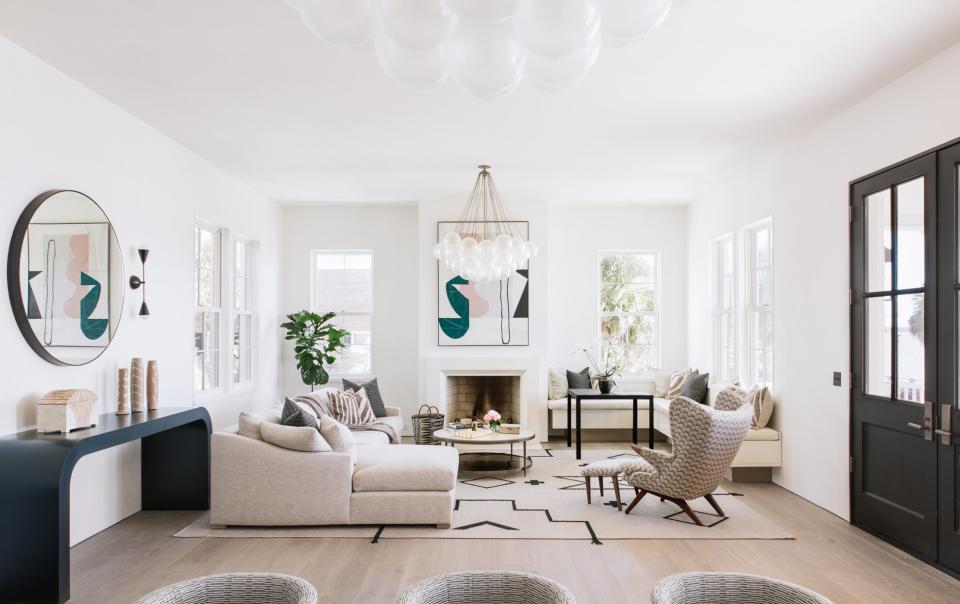How Much Square Footage Do You Really Need in a House or Apartment?
If you're on the hunt for a new house or apartment to call home, determining the ideal square footage for your needs will help make the process easier. Before you get started, it's important to note that the average home size is actually growing. "The average home built in 2019 was 21 percent larger than the average home built before 2019," Mischa Fisher, the chief economist at Angi, says. "The difference is over 350 square feet: 2,094 square feet for newer homes, 1,731 square feet for older homes." As for apartments? These days, the average size clocks in under 900 square feet.
As you begin your hunt for the perfect house or apartment, you should also consider the fact that certain homes were created for specific phases of life—understanding which phase you're in, then, should help you determine size requirements. "The average square footage of an entry-level new house can range from 1,400 to 1,700 square feet and will either have two bedrooms and two bathrooms and a den or three bedrooms and two bathrooms," Polina Ryshakov, the senior director of research and lead economist at Sundae, shares. "For move-up homes, the average range is 1,700 to 2,500 (this includes an extra bedroom). Here, find out the best home square footage for your family.
Related: The Best Ideas for Revamping Every Room in Your Home, According to the Experts

Katie Charlotte
Understand the full square footage details.
Not all parts of a home are included in its formal square footage; unconditioned living spaces, for example, don't make the cut (according to Ryshakov, the area has to be heated to count). "Garages, attics, and unfinished basements may be excluded from the square footage, as well as utility closets and outdoor living areas like patios, verandas, and outdoor kitchens," Fisher says, noting that this is why it's not always the most accurate determination of size. "Be sure to think about how the [home or apartment] fits your needs and spend some time walking around the space to get a feel for its size. It's also okay to bring some measuring tape to your visit to do some measuring of your own."
Think about your lifestyle.
Growing families could benefit from an extra room for a baby, so opting for a property with more square footage, in this case, could be the right choice. Other needs should be kept in mind, too—would you like an office if you work from home, or is it more important to have space for a home workout studio? Ryshakov recommends asking yourself two questions: How much time do we plan to spend at home? Do we want to entertain often? Location is also a factor, notes Ryshakov: "City dwellers and suburban couples will think about space differently, so it depends," she says. "A city dweller may value convenience of location and public transportation more than square footage, for example. In contrast, a suburban couple might prefer a big backyard."
In most cases, more space is preferable: "Our latest research finds that people are more likely to increase space than to decrease space when moving to their forever homes," Fisher says. "This means it's usually preferable to have too much space versus too little." So, if you do have extra space, you can think outside the box and create a home gym, meditation space, playroom, or guest room.
Consider your budget.
Your budget should always be top of mind. Choosing between more or less square footage, says Ryshakov, could depend on a person's debt-to-income ratio, credit, and pricing in a specific geographic location. And in most cases, the bigger the home, the higher the price. "More space is great in theory, but it's important to keep in mind that it also typically costs more—a higher down payment, higher monthly utilities, and higher insurance premiums," says Fisher.

